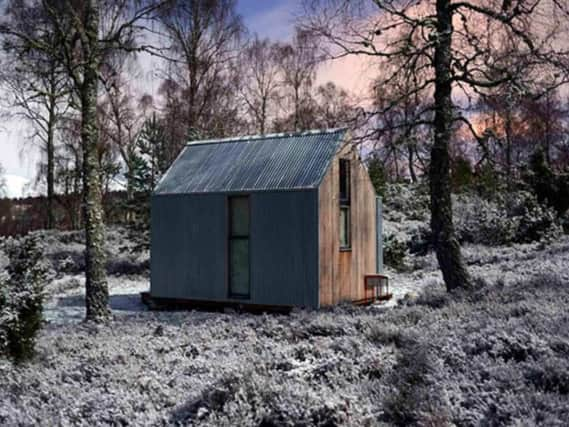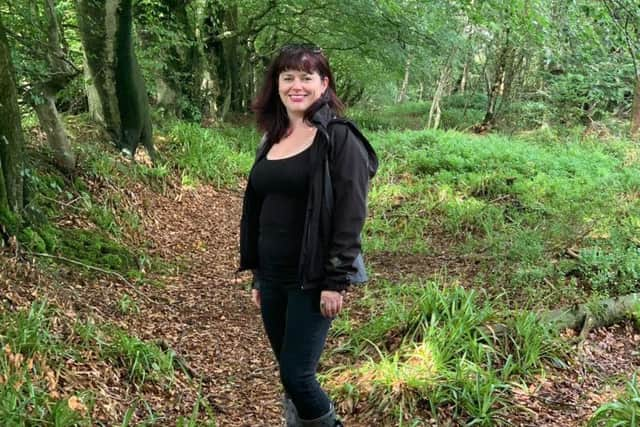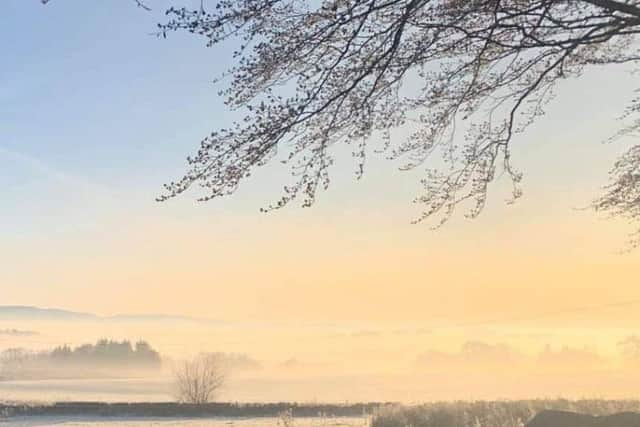New hutting communities emerge as people take to the woods for peace and shelter


Now, a new generation of hutters is emerging in Scotland as communities take shape among the trees across Scotland.
Hutting, long a way of life in Scandinavian countries, draws people into the countryside to spend time closer to nature and simpler times.
Advertisement
Hide AdAdvertisement
Hide AdHuts usually have no electricity or running water but are often made comfortable with stoves, candles and, importantly, good design. Composting toilets are the norm.


Next month, a hutters rally will be held in Dundee to bring hutting enthusiasts together with planners and landowners as several key projects - from Dumfries and Galloway to Highland and the Central Belt - gain momentum.
At Carnock Wood in Fife, the first hutting community to be built on former national forest estate, is taking shape.
More than 600 people applied for one of 12 plots with leases and a code of conduct now being drawn up with the help of Reforesting Scotland.


Meanwhile, planning permission has been granted for 14 huts in a birch wood near Lanark where a Roman camp once stood.
Louise Witter, from Aberdeen, bought the 32-acre plot two years ago, partly as an investment and partly as place where an environmentally friendly project could take root.
Ms Witter, the director of a chemical legislation firm, is now in the process of setting up one of Scotland's latest hutting communities, which is called The Encampment, in part of the wood.
Planning permission for 14 huts on the site has been granted with seven plots now leased out and one more reserved.
Advertisement
Hide AdAdvertisement
Hide AdHutters will rent the plot from Ms Witter for between £1,300 and £1,500 a year and then construct their own hut.
Building one of the huts - planners have already approved a design which comes in three sizes - is then left to the plot holder. It is expected each could cost from around £7,500 to build, depending on materials used.
Ms Witter said she was unaware of the hutting trend at the time she bought the woodland.
She said: "It was the land agent who suggested hutting. I thought 'what on earth is hutting, people don't really do this do they?'.
"I was surprised how many people actually knew about it. Setting up a hut site is not what I set out to do, but it is something that came to me."
The hutters come from places such as Edinburgh, East Kilbride and Fife with teachers and civil servants among them.
"Most people live within an hour's drive, just far enough away from everyday life, but not too far away," Ms Witter added.
She said that some were interested in hutting given they had been brought up with "bothy culture". Others had spent time at Carbeth, Scotland's original hutting community near Strathblane in Stirlingshire, which started as a camp for recovering World War One soldiers seeking refuge from the dark industrial landscape of Glasgow.
Advertisement
Hide AdAdvertisement
Hide AdEach hut at The Encampment will have a wood burning stove and has been designed so it has no electricity or running water with light coming from candles and other low-impact sources.
Ms Witter said: "You are going back to a more natural way of living. You go to bed when it is dark and you get up when it is light.
"The way I see it, the more technology you have, the more you would be as well staying at home. I really want to minimise technology on the site. I don't want to turn up and there are 60 inch televisions there.
"I also really want to make sure that we don't upset the wildlife."
Badgers, foxes, squirrels and deer live at the Camp Wood site with raptors known to drop by.
Ms Witter, who said the planning process had been slow and challenging, is due to build a hut on one of the plots next year but admits she is not sure if the lifestyle is for her.
"I actually don't know if it is. A bit of me thinks it really is for me but I will have to wait and find out. I think hutting is a bit like Marmite. I think you either absolutely love it or you would rather be at home," she said.
The Scottish Government has backed the creation of more huts in Scotland and introduced a planning policy in 2014 that was designed to make it easier to access this way of life that encourages low-carbon living, a sense of community and physical and mental wellbeing.
Advertisement
Hide AdAdvertisement
Hide AdA hut is now defined as a simple building that is used as recreational accommodation and generally not connected to water, electricity of sewerage. The inside space of a hut is no more than 30 metres squared with the idea it can be removed at the end of its life and leave little trace.
Huts do still require planning permission, however, with hutters finding mixed reactions from planning authorities across the country.
Reforesting Scotland's Thousand Huts campaign will host its Hutters Rally in Dundee on February 8 with around 200 hutters, prospective hutters and landowners due to gather.
Broadcaster and journalist Lesley Riddoch will present her latest research on the differences in uptake of hutting in Scotland and Norway with other keynote speakers including Scottish Land Commissioner Megan Macinnes; Gavin Mowat, Policy Adviser to Scottish Land and Estates and Jon Hollingdale, Chief Executive of the Commusnity Woodland Association.
Sessions will also be held on affordable hutting, how to develop a hut site, land access and planning permission.
Donald McPhillimy, director of the Reforesting Scotland campaign, said it was hoped building would start at Carnock Wood this summer.
Hutters here have formed a limited company with some of the decisions regarding the site to be taken on a co-operative basis. A separate code of conduct will set out site rules on issues such as dogs, noise and gardens.
Final negotiations are now being made with Forestry Land Scotland on the details of the lease.
Advertisement
Hide AdAdvertisement
Hide AdMr McPhillimy said the progress had been slower than hoped but that now more was known about the reality of setting up a hutting community.
"Hopefully people will be soon able to enjoy and relax in the new community there.
"It is like any human endeavour. It has been challenging at times and also rewarding. It has been very rewarding meeting this new group of people and then them also meeting each other. There is some very talented and interesting people in the group and that is going to be good for the future."
Tickets for the Hutters Rally are available at www.eventbrite.co.uk
